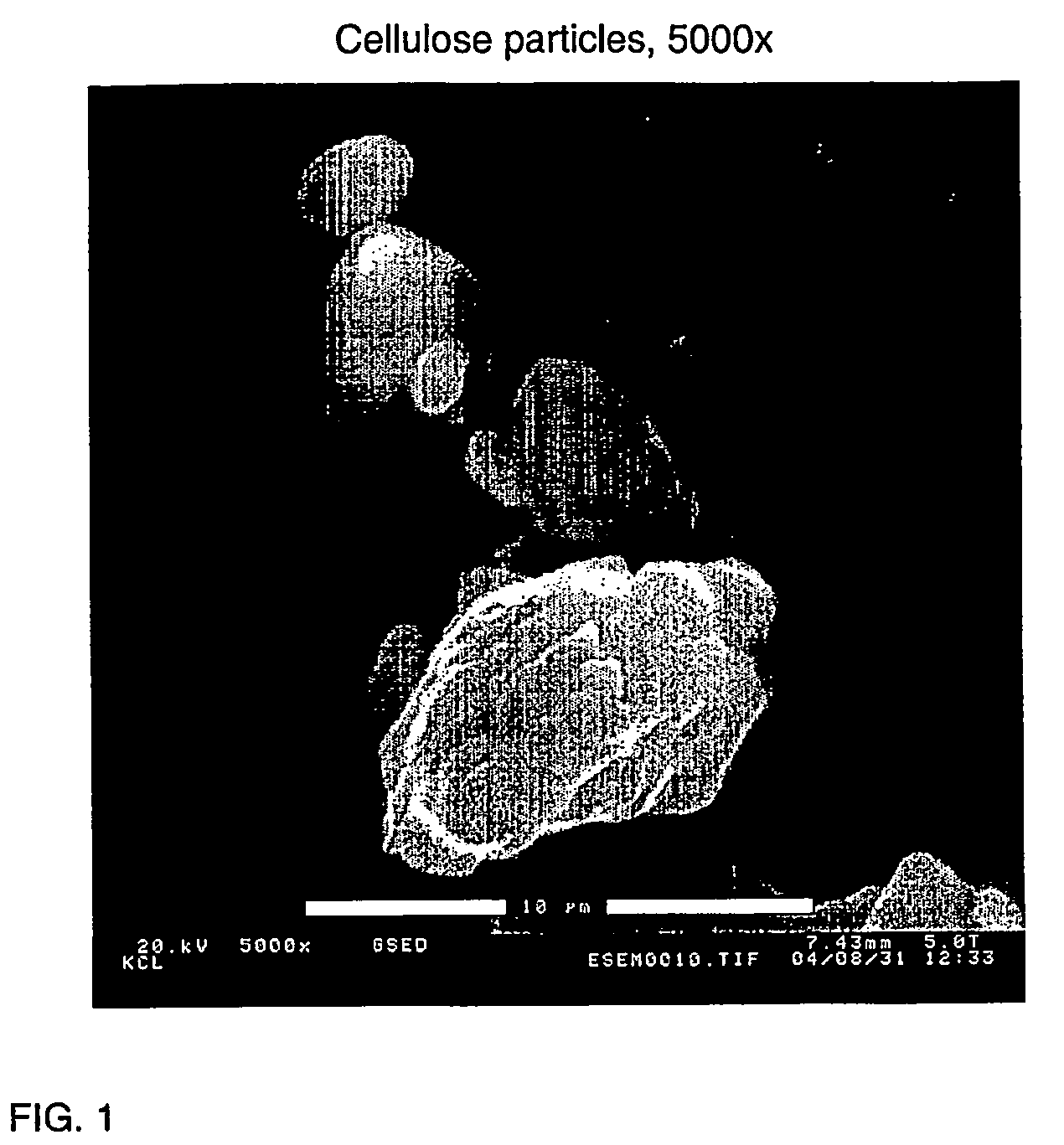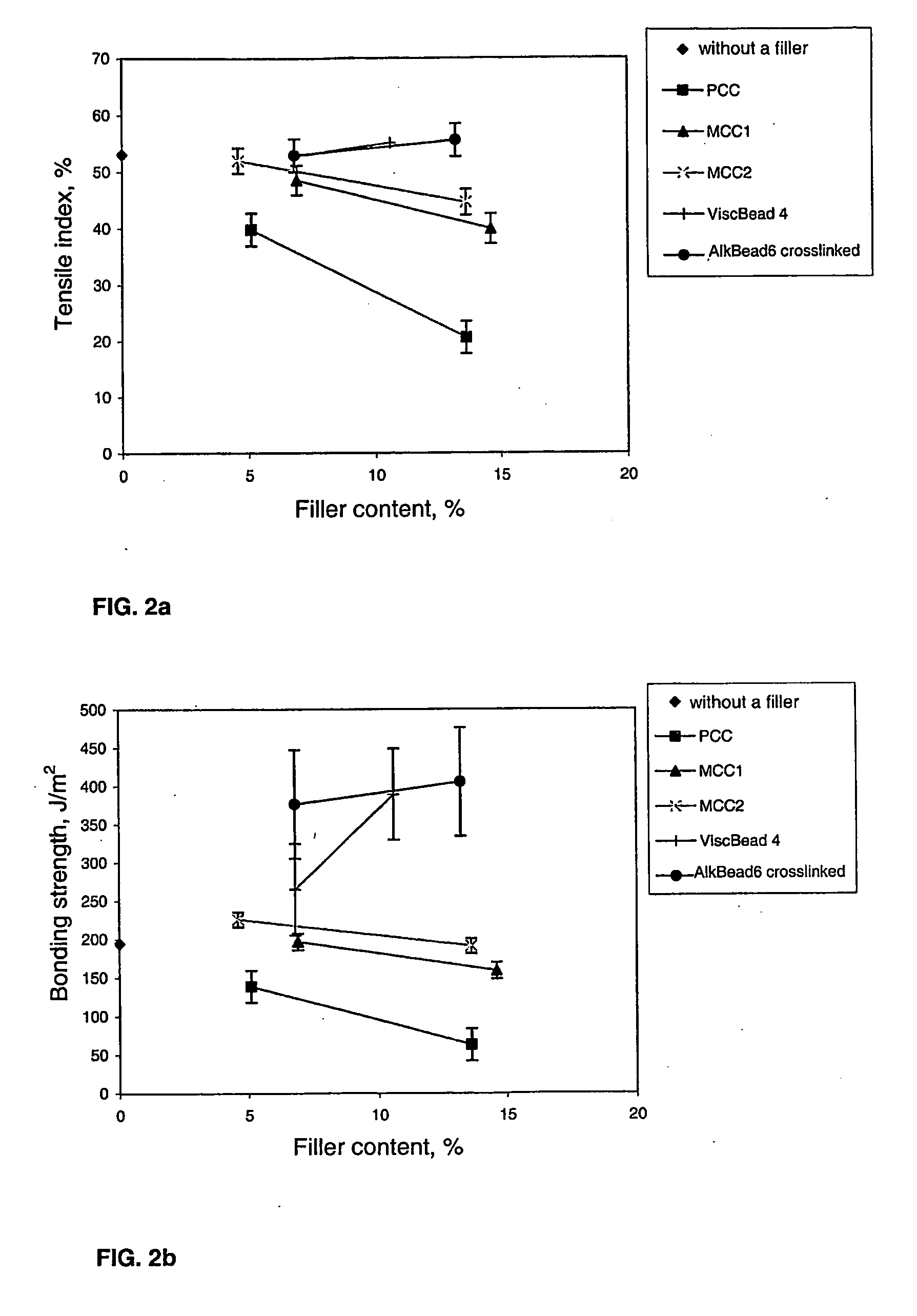Method for Dissolving Cellulose and for Producing Cellulose Particles
a technology of cellulose and dissolving technology, which is applied in the direction of non-fibrous pulp addition, papermaking, coating, etc., can solve the problems of low solubility of enzymatically treated cellulose, high cost and/or environmental hazards, and difficult control of processes, etc., to achieve the effect of improving the strength properties of products
- Summary
- Abstract
- Description
- Claims
- Application Information
AI Technical Summary
Benefits of technology
Problems solved by technology
Method used
Image
Examples
example 1
Preparation of Cellulose Particles from Dissolved Cellulose
[0045]Bleached softwood pulp was ground in a Valley beater for 1 hour. A sample of 400 g was taken (consistency 13.08 g / l), and the pH was adjusted to a value of 5 using dilute NaOH and HCl solutions. 1 ml of the Pergalase A40 enzyme having an activity of 2316 IU / g and specific weight of 1.11 g / ml was added to the samples thus obtained. The samples were heated in a water bath at 50° C. for 6 hours. Thereafter, a base treatment was performed, said base treatment comprising the addition of 100 g of NaOH dissolved in 70 g of water to the samples, followed by heating of the samples at 45° C. for 6 hours. A solution containing about 0.8% by weight of cellulose was sprayed with a spraying bottle to 1 litre of 1M sulphuric acid in a large beaker. The spraying bottle was equipped with a fan-like nozzle having a spreading angle that may be adjusted in a stepless manner. The spreading angle of the nozzle was here about 60° C., the dis...
example 2
Stiffening of the Structure of Cellulose Particles by Formaldehyde Treatment
[0046]Cellulose particles were prepared as described in the preceding example. The particles were, however, not filtered and washed, but remained in the regenerating solution, followed by the adjustment of the H2SO4 content of the suspension to a value of 0.1 M. 37% formaldehyde containing from 10 to 15% of methanol, 5 moles of formaldehyde per one mole of glucose units was added dropwise to the suspension of the cellulose particles at room temperature, the slurry was heated at 50° C. for 60 minutes and the cellulose particles were recovered by filtering.
example 3
Use of the Cellulose Particles Treated with Formaldehyde as a Filler in Paper
[0047]Sheets were made of pulp consisting of 70% of bleached birch pulp and 30% of bleached softwood pulp, the sheets containing as a filler cellulose particles produced and treated with formaldehyde as described in the preceding examples, having sizes of 1.5 to 8 μm. Sheets without any filler and sheets containing microcrystalline cellulose or precipitated calcium carbonate as the filler served as controls, respectively. Sheets having grammages of 60 g / m2 were made according to the standard SCAN-C 26:76. The filler contents were about 6%, and 14%, by weight. The light scattering coefficients, bonding strengths as Scott Bond values, and tensile indices for the sheets were determined with methods according to SCAN-P 8:93, TAPPI T 569, and SCAN-P 67:93.
[0048]FIGS. 2a, 2b, 2c and 2d, respectively, graphically present the tensile index as a function of filler content, bonding strength as a function of filler co...
PUM
| Property | Measurement | Unit |
|---|---|---|
| temperature | aaaaa | aaaaa |
| temperature | aaaaa | aaaaa |
| temperature | aaaaa | aaaaa |
Abstract
Description
Claims
Application Information
 Login to View More
Login to View More - R&D
- Intellectual Property
- Life Sciences
- Materials
- Tech Scout
- Unparalleled Data Quality
- Higher Quality Content
- 60% Fewer Hallucinations
Browse by: Latest US Patents, China's latest patents, Technical Efficacy Thesaurus, Application Domain, Technology Topic, Popular Technical Reports.
© 2025 PatSnap. All rights reserved.Legal|Privacy policy|Modern Slavery Act Transparency Statement|Sitemap|About US| Contact US: help@patsnap.com



